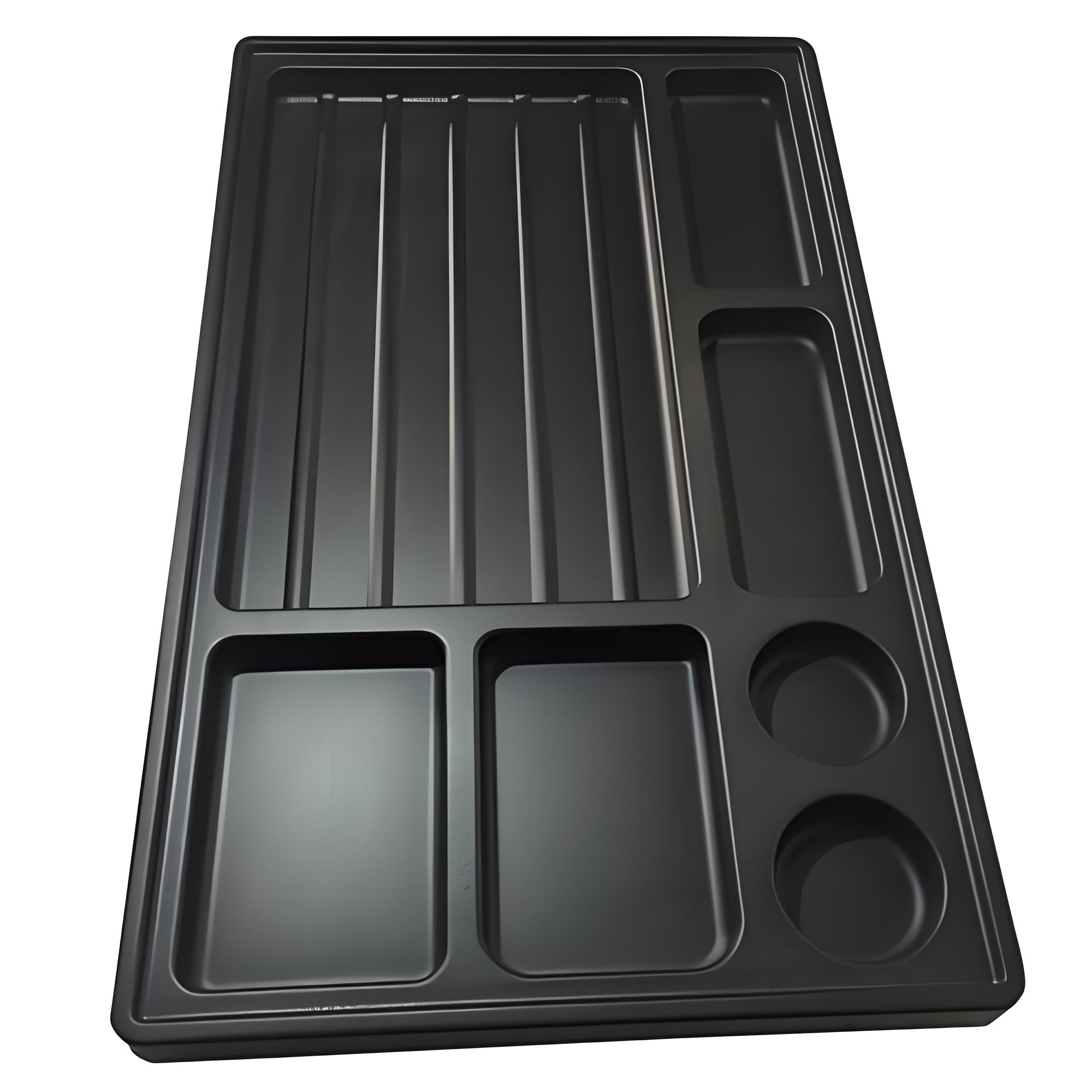- Home
- Capability
- Products
- About Us
- Service Industry
- Service Cases
- Video
- Contact Us
-
Language



1、 Process and Method
The processing of Abs Vacuum Forming mainly includes the following steps:
Heating treatment: Heat the ABS plastic sheet to soften it.
Vacuum adsorption: By using the suction holes inside the mold, the air inside is removed. At this time, the softened ABS plastic sheet is tightly adhered to the surface of the mold due to the action of air pressure, and its shape is the same as that of the mold.
Cooling solidification: The thin film solidifies and forms after cooling.
Edge trimming: Take out the formed ABS vacuum formed product, and then perform edge trimming and precision machining on its corners to achieve the desired effect.
In Abs Vacuum Forming, common methods include concave mold vacuum forming, convex mold vacuum forming, concave convex mold sequential vacuum forming, bubble blowing vacuum forming, auxiliary convex mold vacuum forming, and vacuum forming with gas buffering devices.
2、 Application and advantages
Abs Vacuum Forming is widely used in industries such as plastic packaging, lighting, advertising, and decoration. Its advantages mainly include:
Save raw materials: ABS plastic has a high utilization rate, reducing the waste of raw materials.
Lightweight and easy to transport: The molded product is lightweight and easy to transport and carry.
Good sealing performance: ABS plastic has excellent sealing performance and can meet various packaging needs.
Can package any shaped product: The flexibility and plasticity of ABS plastic enable it to be molded into various shapes, meeting diverse packaging needs.
Transparent and Visible, Beautiful Appearance: ABS plastic has high transparency, and the molded product has a beautiful appearance, making it easy to sell.
Suitable for mechanized and automated production: Abs Vacuum Forming technology facilitates the implementation of mechanized and automated production, improving production efficiency and quality.
3、 Precautions
When performing Abs Vacuum Forming, the following points should be noted:
Heating temperature control: The heating temperature should be moderate, as too high or too low can affect the molding effect of ABS plastic.
Mold selection and design: Mold design should be customized according to the shape and size of the product to ensure that the formed product meets the requirements.
Control of cooling rate: The cooling rate should be uniform to avoid product deformation or cracking.
Fineness of trimming processing: Trimming processing should be precise to ensure the appearance quality and dimensional accuracy of the product.